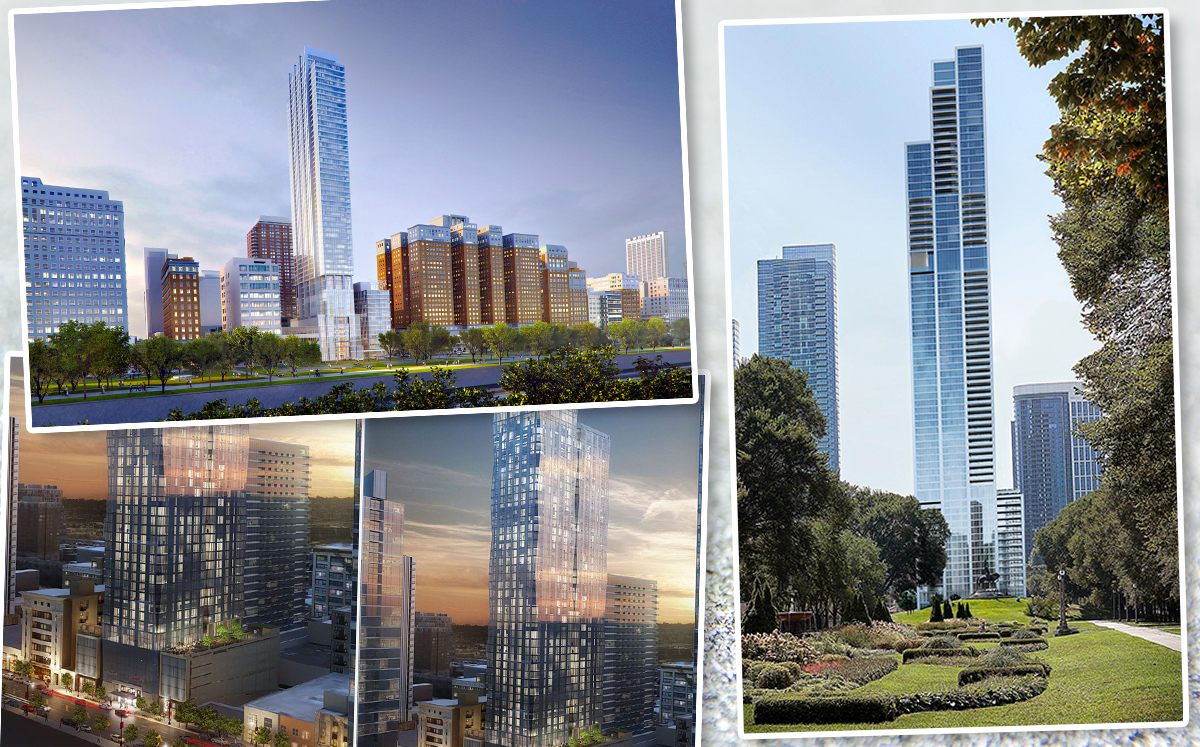Trending
Apartment rent growth poised to slow as deliveries ramp up this year: forecast
About 9,500 new units are expected to come online across the metro area this year, adding to vacancies

About 9,500 apartments are projected to come online this year throughout the Chicago area, a new high water mark for the post-2008 building cycle and a sign that investors are eager as ever to jump into ground-up multifamily development.
The glut of new units is expected to nudge up the apartment vacancy rate for the nine-county metro area from 5.3 to 5.7 percent, roughly back to where it was in 2017, according to a report from Marcus & Millichap.
Average effective rents are also expected to grow more slowly than last year, when they increased by about 4.4 percent. Researchers project the average effective rent to reach $1,510 per month this year, about a 3.2 percent uptick from 2018.
Competing efforts to lease up high-profile new apartment buildings like 727 West Madison Street, the Cooper at Southbank and One Bennett Park have forced leasing teams to temper their starting rents and trot out concessions to lure tenants, according to David Bradley, regional manager of Marcus & Millichap’s Chicago office.
But the renter’s market won’t last forever, especially if the steady stream of corporate relocations keeps adding new jobs Downtown, Bradley said.
“The new construction that’s very visible Downtown may give you the impression that at some point we’ll become overbuilt,” Bradley said. “But based on our assessment of the whole situation, there’s still plenty of room to run.”
The report projects about 30,000 jobs to be added this year, fewer than the 34,500 jobs created in 2018 but enough to maintain an open pipeline of renters looking for homes, he said.
“It’s going to take a bit of time for these additional units to be absorbed, and we’re not going to see double-digit rent growth,” Bradley said. “But vacancy is going to do pretty well as jobs continue to be created, especially Downtown, where the sense I get … is that deliveries are not catching up to demand.”
The Marcus & Millichap forecasts published during the last two years aimed high in their job growth projections, overestimating the number by 46,000 in 2017 and by 5,500 in 2018, according to subsequent years’ reports.
Last year’s report also overestimated unit deliveries for 2018, predicting 9,900 new units and an uptick in vacancy. Instead, 9,200 apartments were completed and vacancy fell by 40 basis points.
Developers are on pace to open about 4,400 new apartments inside the city this year, a post-recession record. Nearly half those units will materialize in the South Loop, where the 800-unit NEMA Chicago, the 479-unit Essex on the Park and the 500-unit tower at 1326 South Michigan Avenue are all speeding toward completion.
But while skyline-shifting towers are adding the most units, mid-size apartment buildings in more affordable neighborhoods still may generate the best return for outside investors, according to researchers.
Marcus & Millichap estimates property owners who buy apartment buildings of 50 units or fewer in neighborhoods like Ukrainian Village, Logan Square and Lakeview can see yields of 5 percent or more — especially if they renovate older buildings and raise rents, a practice developer Mark Fishman has become infamous for repeating in Logan Square.
The allure of high returns has drawn a flood of buyers from both coasts and even from overseas, where more expensive land limits their buying power, Bradley said.
“It’s become common for us to a get call from a 29-year-old guy who made a couple million on a tech venture in California, and wants to invest here,” Bradley said. “If you look at what kind of real estate $2 million buys you in San Francisco, it’s not much. Here, it can get you a 20-unit building in some neighborhoods.”




